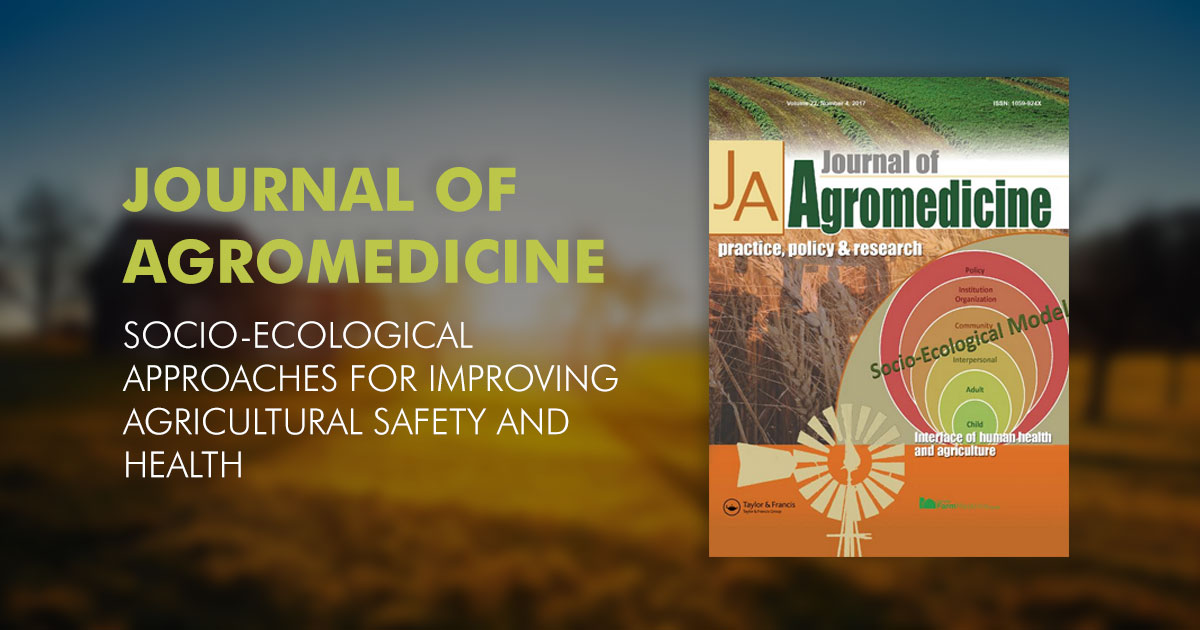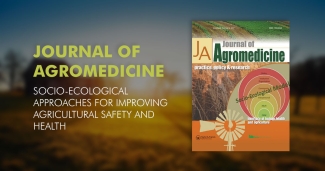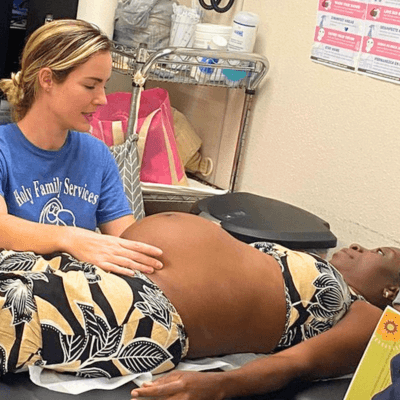Multifaceted, Overlapping, Critical to Understand: The Spheres of Influence Affecting Agricultural Worker Health and Safety

This month, the Journal of Agromedicine released a special issue focused on utilizing the socio-ecological model (SEM) to improve agricultural safety and health. Migrant Clinicians Network’s Environmental and Occupational Health (EOH) team contributed, with Amy Liebman, MPA, MA, Director of EOH, as a guest editor for the issue and as lead author and co-author on multiple articles, and Juliana Simmons, MSPH, CHES, EOH Program Manager, as a co-author.
Through the mode of SEM, which analyzes the multilayered and interacting influences that govern human behavior, the journal presents projects to best address occupational health for agricultural workers.
“This issue offers important applications of the socio-ecological model as it applies to improving the health and safety of agricultural workers and underscores an approach to address the various and dangerous risks in agriculture,” said Liebman. “Through this model, we can recognize that many and, at times, overlapping factors must be engaged to influence health and safety, including clinician involvement, active grower participation, safety policies on the farm, and public policy and regulations.”
MCN’s Protecting Children While Parents Work is highlighted in an article entitled, “Caring for Children While Working in Agriculture—The Perspective of Farmworker Parents.” The project focused on addressing agricultural workers’ lack of access to safe, off-farm childcare.
“Our project aims to improve access to safe, off-farm childcare for children of farmworker families by targeting key players at various levels of the socio-ecological model,” stated Simmons, a co-author on the article and the lead researcher in the project. “This paper underscores the importance of finding common ground among agricultural employers, childcare providers, and farmworker parents in order to improve child health. Our parent perspective paper highlights some key findings that could be used to bridge the divide between these three main stakeholder groups.”
Liebman also co-authored “Using the Socio-Ecological Model to Frame Agricultural Safety and Health Interventions,” an article which the publisher is offering free of charge to read in full online for the next 60 days. The article delves into the history of SEM, the unique health and safety needs of agricultural workers, and the modification of SEM with children in the farm environment as the focus. Liebman co-authored the article, “Employers’ Perspective on Childcare Services for Hired Farm Workers” as well. The complete issue covers health risk interventions across a huge range of agricultural occupations, from ranchers, dairy owners, agribusiness leaders, state agencies, and federal policy makers, to specific agricultural workers including tribal bison workers, Australian fisheries workers, and Irish agricultural workers.
“The socio-ecological framework reminds us that we need to approach health and safety at many levels and that the burden of responsibility for health and safety is not solely in the hands of the worker,” Liebman noted. “Such an approach is needed now more than ever.”
- “Caring for Children While Working in Agriculture -- The Perspective of Farmworker Parents,” http://dx.doi.org/10.1080/1059924X.2017.1358229.
- “Using the Socio-Ecological Model to Frame Agricultural Safety and Health Interventions,” http://dx.doi.org/10.1080/1059924X.2017.1356780.
- “Employers’ Perspective on Childcare Services for Hired Farm Workers,” http://dx.doi.org/10.1080/1059924X.2017.1358230
Like what you see? Amplify our collective voice with a contribution.
Got some good news to share? Send it to us via email, on Facebook, or on Twitter.
Return to the main blog page or sign up for blog updates here.
- Log in to post comments






